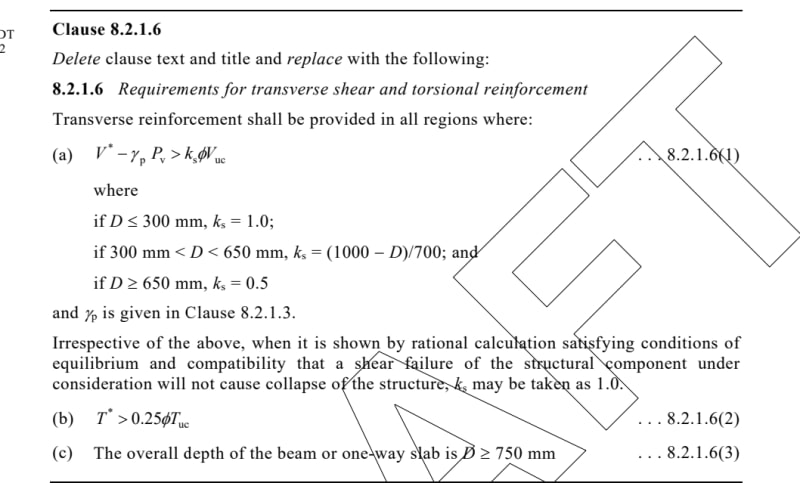structbureau
Structural
- Oct 25, 2012
- 8
It seems that the expectation for all foundations designed in flexure that are greater than >750mm deep requires minimum shear reinforcement in accordance with clause 8.2.1.6 (21.3.1 > 9.3.2(a) > 8.2.1.6 > 8.3.2).
My understanding is that it is due to the irregular shear crack spacing and large crack widths which significantly reduce the shear capacity of deep sections and alignment with MCFT and the Canadian Code which also has this minimum requirement.
Has anybody had an issue with this because it is not industry practice to use shear reinforcement in such members (core raft slabs, crane bases, pad footings). Previously you would size the foundation for Vuc to negate the requirement for shear reinforcement.
Obviously an outcome would be to design to section 12 - Non flexural members and design as a fan based strut system but this does add complexity to the design model.
Like to hear peoples thoughts and whether or not all of Sydney's raft foundations and pad footings are now failing in shear...
Also the draft amendment still upholds this minimum requirement for foundations.
My understanding is that it is due to the irregular shear crack spacing and large crack widths which significantly reduce the shear capacity of deep sections and alignment with MCFT and the Canadian Code which also has this minimum requirement.
Has anybody had an issue with this because it is not industry practice to use shear reinforcement in such members (core raft slabs, crane bases, pad footings). Previously you would size the foundation for Vuc to negate the requirement for shear reinforcement.
Obviously an outcome would be to design to section 12 - Non flexural members and design as a fan based strut system but this does add complexity to the design model.
Like to hear peoples thoughts and whether or not all of Sydney's raft foundations and pad footings are now failing in shear...
Also the draft amendment still upholds this minimum requirement for foundations.

